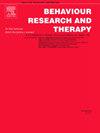想象一个人最好的自我可能会增加对未来的积极期望,但并不能促进纤维肌痛症患者的选择性学习
IF 4.5
2区 心理学
Q1 PSYCHOLOGY, CLINICAL
引用次数: 0
摘要
学习障碍被认为对慢性疼痛残疾的发展和维持有重要的贡献。更具体地说,慢性疼痛患者的预测性学习能力受损。因此,学习机制已被确定为治疗目标。一个被广泛忽视,但相关的问题是,弹性因素是否可以增强选择性学习。本在线研究将选择性学习任务与积极心理干预相结合,对纤维肌痛(FM)患者进行研究。最佳可能自我组(BPS)描述并想象一个一切顺利的未来,这显示出乐观情绪和积极情绪的增加,而积极对照组(TD)描述并想象他们的典型一天(TD)。随后,选择性学习在偶然性学习场景任务中进行测试,使用阻塞过程和疼痛预期作为主要结果。我们成功地操纵了积极的未来预期(状态乐观的代理),但在单次干预中没有产生积极的影响。与我们的预期相反,与TD组相比,积极心理学干预并没有增加BPS组的选择性学习,但在合并样本中观察到一个小的阻断效应。然而,由于没有纳入健康对照组,因此无法得出关于选择性学习效应是否比非临床人群降低的结论。综上所述,有部分证据表明纤维肌痛症患者有选择性学习,但操纵弹性因素并没有调节选择性学习的效果。本文章由计算机程序翻译,如有差异,请以英文原文为准。
Visualizing one's Best Possible Self increases positive future expectancies, but does not boost selective learning in fibromyalgia
Compromised learning is considered to contribute importantly to the development and maintenance of chronic pain disability. More specifically, predictive learning is impaired in people with chronic pain. Therefore, learning mechanisms have been identified as treatment targets. A widely neglected, but relevant question is whether resilience factors can enhance selective learning. This online study combined a selective learning task with a positive psychology intervention in participants with fibromyalgia (FM). The Best Possible Self group (BPS) described and visualized a future in which everything had gone well, which is shown to increase optimism and positive affect, while the active control group described and visualized their Typical Day (TD). Subsequently, selective learning was tested within a contingency learning scenario task using a blocking procedure and pain expectancies as main outcome. We successfully manipulated positive future expectancies (a proxy for state optimism), but not positive affect within a single-session intervention. In contrast with our expectations, the positive psychology intervention did not increase selective learning in the BPS group compared to the TD group, but a small blocking effect was observed in the merged sample. However, because no healthy control group was included, no conclusions can be drawn as to whether the selective learning effect is reduced compared to a non-clinical population. To conclude, there was partial evidence for selective learning in people with fibromyalgia, but manipulated resilience factors did not modulate the selective learning effect.
求助全文
通过发布文献求助,成功后即可免费获取论文全文。
去求助
来源期刊

Behaviour Research and Therapy
PSYCHOLOGY, CLINICAL-
CiteScore
7.50
自引率
7.30%
发文量
148
期刊介绍:
The major focus of Behaviour Research and Therapy is an experimental psychopathology approach to understanding emotional and behavioral disorders and their prevention and treatment, using cognitive, behavioral, and psychophysiological (including neural) methods and models. This includes laboratory-based experimental studies with healthy, at risk and subclinical individuals that inform clinical application as well as studies with clinically severe samples. The following types of submissions are encouraged: theoretical reviews of mechanisms that contribute to psychopathology and that offer new treatment targets; tests of novel, mechanistically focused psychological interventions, especially ones that include theory-driven or experimentally-derived predictors, moderators and mediators; and innovations in dissemination and implementation of evidence-based practices into clinical practice in psychology and associated fields, especially those that target underlying mechanisms or focus on novel approaches to treatment delivery. In addition to traditional psychological disorders, the scope of the journal includes behavioural medicine (e.g., chronic pain). The journal will not consider manuscripts dealing primarily with measurement, psychometric analyses, and personality assessment.
 求助内容:
求助内容: 应助结果提醒方式:
应助结果提醒方式:


